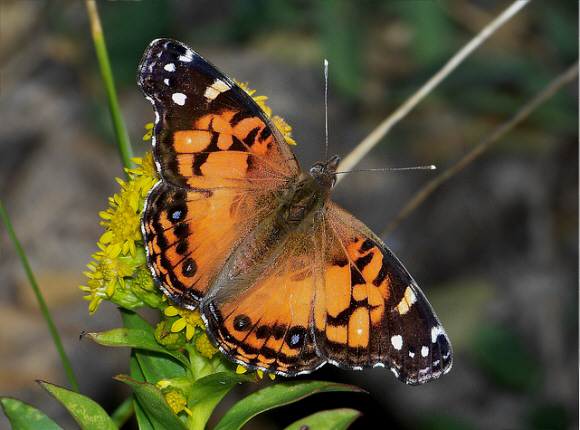
Introduction
The genus Vanessa comprises of about 20 species and includes the most widespread butterfly in the world – the Painted Lady Vanessa cardui which occurs in Europe, Asia, Africa, Australia and across North America. There are 9 other species found in the Americas: myrinna from Brazil, braziliensis from Brazil and Peru, carye from Argentina, terpsichore from Chile, altissima from Peru and Bolivia, tameamea from Hawaii, annabella from the western USA, virginiensis which is distributed from the USA to Colombia, and the Red Admiral atalanta which occurs across Europe, Asia, north Africa, and throughout North America.
All Painted Lady species have a similar pattern of pinkish-orange, black and white on the upperside, and have cryptic undersides marbled in olive and grey, with a row of post-median ocelli of varying sizes on the hindwings.
Vanessa virginiensis is distributed throughout North America and Central America, and also occurs in Colombia, in the Bahamas, Greater Antilles, Hawaii and Canary Islands.
Habitats
This is a migratory species which can turn up in almost any habitat from desert to rainforest, but is most frequent on scrubby grassland, in open deciduous woodland, and in meadows, city parks and gardens. It is found at altitudes between sea level and about 1500m.
Lifecycle
The eggs are whitish. They are laid singly on a wide range of plants including Antennaria, Senecio and Artemesia ( Asteraceae ), Antirrhinum ( Scrophulariacae ) and Malva ( Malvaceae ). The larvae are dark, usually mottled with blackish and bear short whorled spikes on the back and sides. They live solitarily within a silken web spun around the upper leaves and stem of the foodplant, leaving a mass of frass adhering to the silk. The pupae of Vanessa species are greyish, and slightly lustrous. They are suspended by the cremaster within the silk nests spun by the larvae.
Adult behaviour
Both sexes are commonly encountered within the species’ range, sometimes singly, but often in large numbers. As with other Vanessa species mass migrations and mass emergences occur, and it is possible at certain times of year to find hundreds or even thousands nectaring gregariously at sheltered flowery sites.
